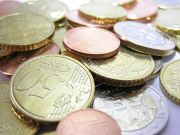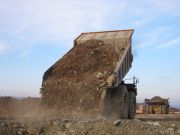Search
-
Greek gov't targets unpaid social security contributions: The numbers involved
 Economy
Economy, according to the general government (gg) bulletin. This mainly stems from a 2.3 percent drop
1% -
Greek central gov’t cash surplus shrinks 70 pct to 503 mln by February
 EconomyMacroeconomy
EconomyMacroeconomyget a difference of 740 million. This is mainly attributed to higher budget revenues (by 563 million
1% -
Greece sees lower primary surplus at 0.3 pct for 2014, fiscal challenges remain
 EconomyProgramme
EconomyProgrammebelow target of 4.94 billion. This mainly reflected an underperformance of net revenues by 3.5 billion
1% -
Greek gov't tables draft law on installments for unpaid taxes: Here's what's in it
 EconomyMacroeconomy
EconomyMacroeconomyThe Finance Ministry (MoF) tabled in Parliament on Wednesday evening the draft bill for the “rebooting of the economy”, which mainly includes the government’s intervention for the settlement of tax and social security contribution (SSC) arrears. This is the second law submitted by the new
1% -
Greek travel receipts rise 9.1 pct in January as surplus doubles
 EconomyMacroeconomy
EconomyMacroeconomyof 14 billion euros. SETE noted that a stable tax framework, mainly related to VAT on islands and hotel
1% -
Why Greece is asking for 1.2 bln back from the EFSF
 Agora
Agoraover this period, with the bulk of them collected as of 2012. This mainly relates to: a) A one-off
1% -
Retail sales down by 2.6 pct in January for third straight monthly decline
 EconomyMacroeconomy
EconomyMacroeconomythan 30 percent on the back of a similar drop in household disposable income mainly reflecting
1% -
Deposit rates stable, avg loan rate below 5 pct for first time since 2002
 EconomyMacroeconomy
EconomyMacroeconomyat 5 percent. The current trend mainly reflects lack of competition since the four systemic banks
1% -
Greek travel receipts rise by 10.2 pct in 2014, arrivals shoot up by 20.7 pct
 EconomyMacroeconomy
EconomyMacroeconomythings a stable tax framework, mainly related to the VAT rates on islands and hotel services, is a key
1% -
Drop in building permits accelerates to 7.1 pct in Jan
 EconomyMacroeconomy
EconomyMacroeconomy. The consistently declining movement over the last six years mainly reflects oversupply, lack of demand
1%